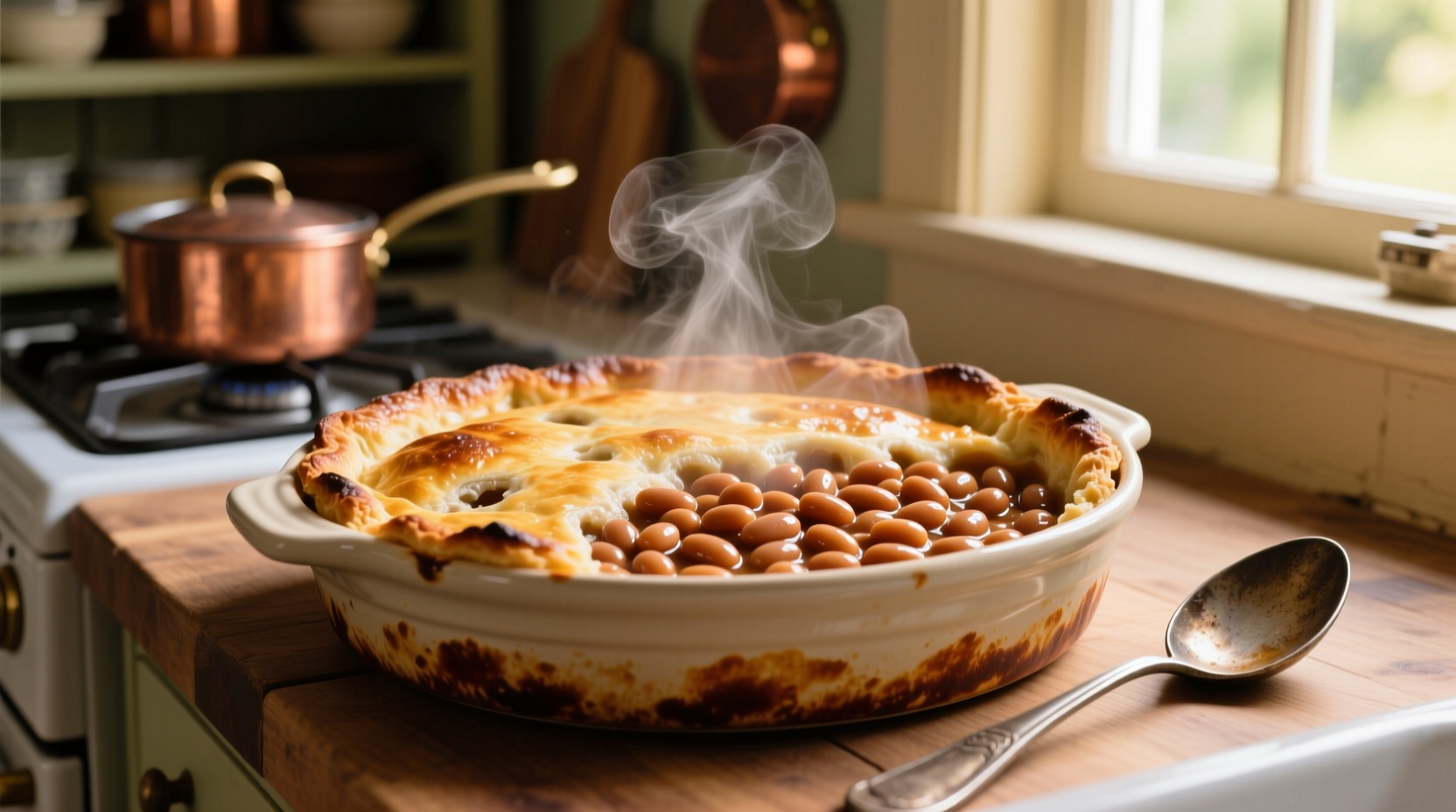For perfectly cooked baked beans in the oven at 350°F, bake canned beans for 20-30 minutes or homemade beans for 45-60 minutes until bubbling and heated through to 165°F internal temperature.
Ever pulled out a disappointing batch of baked beans that were either cold in the center or dried out around the edges? Getting that perfect balance of heated-through goodness without sacrificing texture requires precise timing and technique. This guide delivers exactly what you need to know to achieve consistently delicious baked beans every time you fire up your oven at 350°F.
What You'll Need Before Starting
Before you even preheat your oven, gather these essentials to ensure smooth preparation:
- Canned or homemade baked beans (28-ounce can or equivalent)
- Oven-safe baking dish (ceramic or glass works best)
- Aluminum foil
- Meat thermometer (critical for food safety)
- Oven mitts
Using the right container matters—avoid metal pans which can cause uneven heating. Glass or ceramic distributes heat more evenly, preventing those frustrating cold spots in the center while avoiding burnt edges.

The Step-by-Step Baking Process
Follow this sequence for foolproof results every time:
Preparation Phase (5 minutes)
- Preheat your oven to 350°F—don't skip this step as baking in a cold oven alters cooking time
- Transfer beans to your oven-safe dish (leave about 1 inch of space at the top)
- Stir in additional ingredients if desired (bacon, brown sugar, mustard)
- Cover dish tightly with aluminum foil
Cooking Phase (Critical Timing)
| Bean Type | Minimum Time | Maximum Time | Internal Temp |
|---|---|---|---|
| Canned beans | 20 minutes | 30 minutes | 165°F |
| Homemade beans | 45 minutes | 60 minutes | 165°F |
| Beans with meat | 30 minutes | 45 minutes | 165°F |
After the minimum time, carefully remove the foil (watch for steam!) and check the internal temperature. The USDA Food Safety and Inspection Service recommends 165°F as the safe minimum internal temperature for reheated foods to eliminate potential pathogens (source).
Finishing Touches (5-10 minutes)
- Remove foil for the last 5-10 minutes to develop a slight crust
- Stir gently once during the uncovered phase
- Let rest 5 minutes before serving (temperature continues to rise 5-10°F)
Troubleshooting Common Issues
Even with perfect timing, problems can arise. Here's how to fix them:
Dry or Thickened Beans
If your beans have thickened too much during baking, stir in 2-3 tablespoons of water, broth, or apple cider vinegar. The acid in vinegar actually helps maintain texture while adding brightness to the flavor profile.
Cold Center, Hot Edges
This common issue stems from uneven heat distribution. Solution: Use a glass or ceramic dish (not metal), rotate the dish 180 degrees halfway through cooking, and always stir before the final uncovered phase.
Burning on Bottom
Place your baking dish on the middle rack with a baking sheet on the rack below to catch drips and absorb excess heat. Never bake beans directly on the oven floor.
Expert Timing Variations
Several factors influence your exact cooking time. Consider these variables when planning:
- Starting temperature: Refrigerated beans need 5-10 extra minutes versus room temperature
- Bean density: Beans with large meat chunks require longer to heat through
- Oven accuracy: Verify with an oven thermometer—many ovens run 25°F hotter or cooler than displayed
- Altitude: Above 3,000 feet, add 5-10 minutes as water boils at lower temperatures
According to Colorado State University Extension's food safety guidelines, "At higher altitudes, the lower atmospheric pressure means that foods take longer to cook because water boils at a lower temperature" (source). This affects bean cooking times as the liquid evaporates differently.
Serving Suggestions for Perfect Results
Timing doesn't end when the oven turns off. Maximize your perfectly cooked beans with these finishing touches:
- Let beans rest covered for 5 minutes after baking—this allows temperature to equalize
- Stir in fresh herbs (parsley, cilantro) or a splash of vinegar just before serving
- Serve in pre-warmed dishes to maintain temperature longer
- Pair with cornbread or grilled meats for a complete meal
Remember that baked beans continue cooking from residual heat after removal from the oven—a phenomenon food scientists call "carryover cooking." This explains why resting time is crucial for perfect texture.











 浙公网安备
33010002000092号
浙公网安备
33010002000092号 浙B2-20120091-4
浙B2-20120091-4